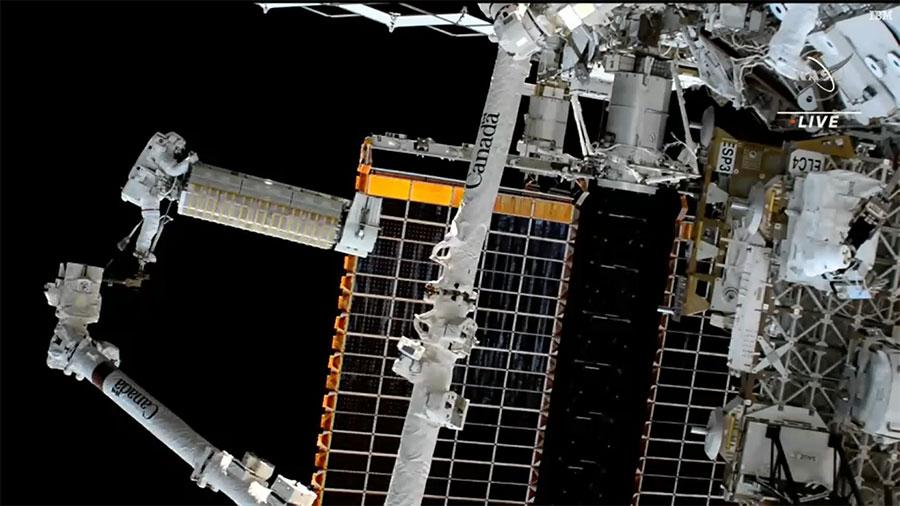
HOUSTON -- NASA pressed ahead with upgrades to the solar power generation system aboard the International Space Station (ISS) with a Dec. 3 spacewalk by astronauts Josh Cassada and Frank Rubio to install the third of six planned ISS Roll Out Solar Arrays (iROSAs).
The seven-hour task took the spacewalkers to the starboard side of the seven-person orbital science laboratory's 356-ft.-long solar power truss.
The iROSA they installed to upgrade the 3A power channel, one of eight ISS power channels, was one of two iROSAs delivered aboard SpaceX's 26th NASA-contracted resupply mission, which launched and docked to the ISS on Nov. 26-27. The second iROSA is to be installed at the port side of the truss by Cassada and Rubio during a spacewalk planned for Dec. 19.
The orbital lab's original solar power network is spread across eight power channels, each supported by outstretched pairs of solar panels installed during space shuttle missions between December 2000 and March 2009. Those original solar panels have degraded over time. The total ISS solar power generation provided by the original solar arrays and IROSAs is forecast to increase to 215 kW when all six of the iROSAs, which each generate more than 20 kWs, are installed.
NASA, backed by the European and Japanese space agencies, is working to extend ISS operations from 2024 through 2030, enabling the agency to transition its low Earth orbit scientific research and technology development activities to multiple commercially owned and operated free flyers.
The first two ROSAs were installed with NASA spacewalks in June 2021 at the port side of the solar power truss.
Working with the help of the space station's 57-ft.-long Canadian robot arm, which was commanded from inside the ISS by Japan Aerospace Exploration Agency astronaut Koichi Wakata and NASA astronaut Nicole Mann, Cassada and Rubio moved the first 750-lb. iROSA from a temporary storage site on the truss to their worksite at the 3A power channel of the S4 truss, a component added to the ISS by shuttle astronauts in June 2007.
Once at the worksite, the spacewalkers mounted the iROSA to a previously installed support bracket and made four power cable connections to the ISS integrated electronics assembly. Then they released restraint fixtures that enabled the flexible, 20-ft.-wide array to unfurl itself out in sunlight over nine minutes to a length of 60 ft. starting at 12:37 p.m. EST, five hours and 20 min. into the spacewalk.
"This is remarkable. I'm rarely speechless, but this will do it," one of the spacewalkers said over the ISS air-to-ground communications link, on which Mission Control personnel could be heard applauding in the background.
"You guys have crushed it," NASA's Nick Hague, their Mission Control contact, said to Cassada and Rubio. "It's up and working."
Next, the spacewalkers took on a task added to the excursion in response to a Nov. 23 power trip that disabled the 1B power channel near the iROSA worksite.
ISS operations supported by the 1B channel were transitioned to the IA channel with minimal disruption, according to a NASA status report.
Cassada and Rubio disconnected one of four 1B power cables to isolate the difficulty and enable the channel to be brought back online with commands from NASA's Mission Control Center. About 75 percent of the IB power distribution capability is to be restored. The IB power channel is in line to receive an iROSA upgrade in 2023.
